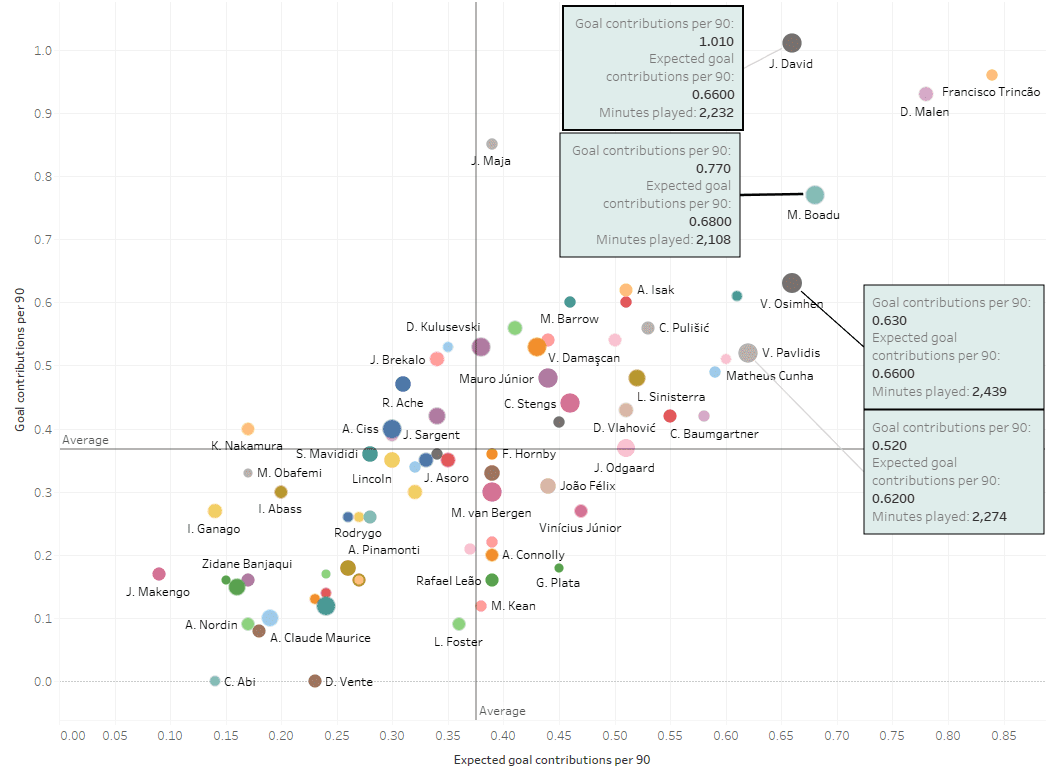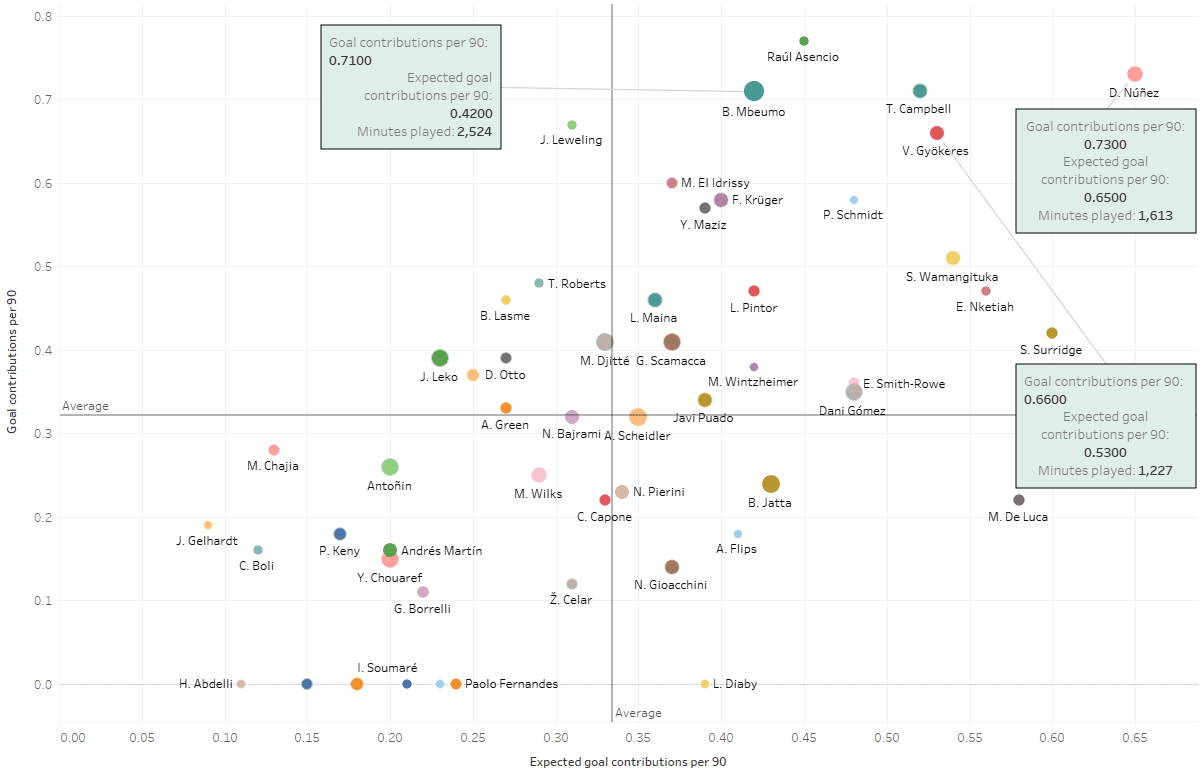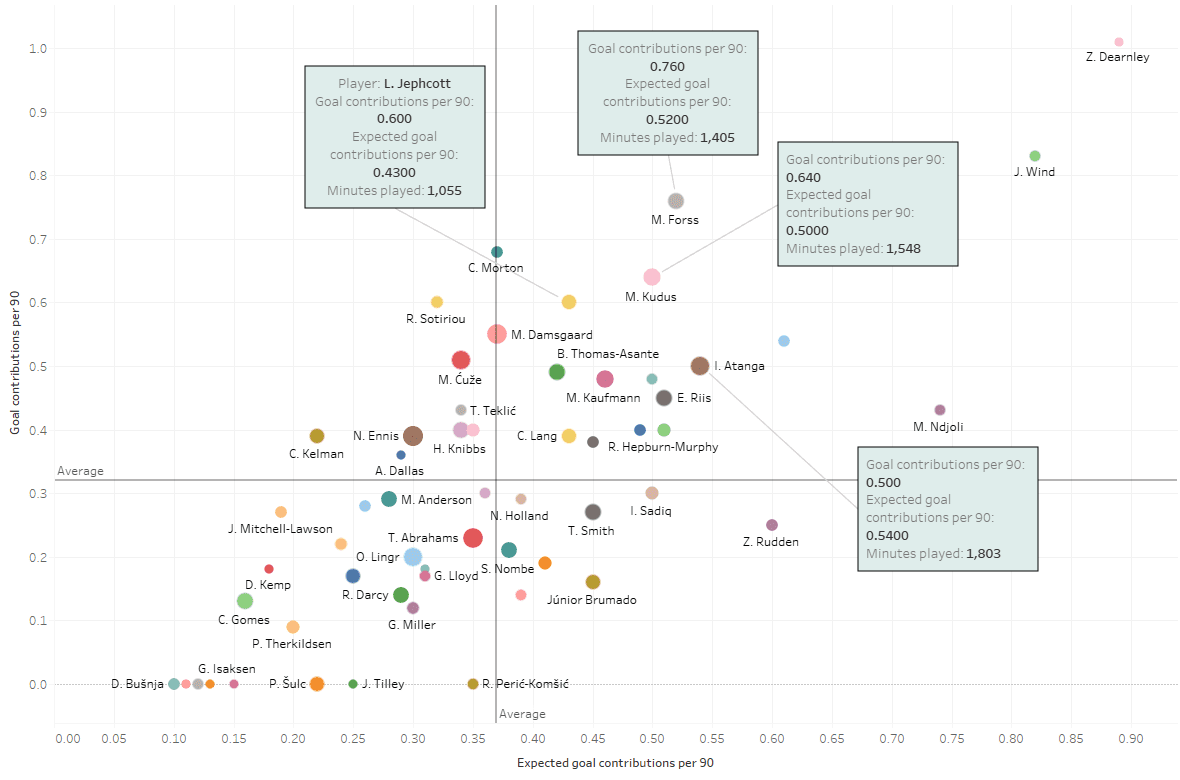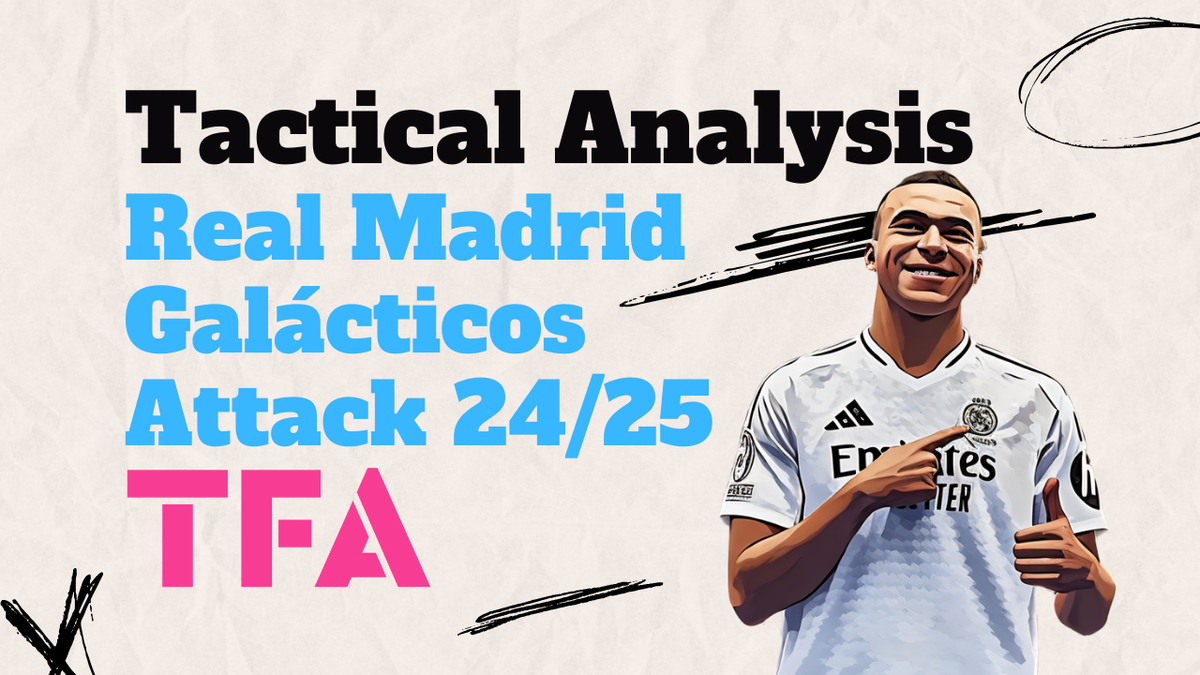The use of data as a key tool in the recruitment of players is not a concept that is new. For the last decade, we have seen an increase in the prevalence of this as a regular practice with some teams investing a large amount of resources in building databases and using algorithms to identify players that can fit their playing style and game model.
While the increase in the use of data in this manner is interesting when looking at best practice from the outside it has to be combined with more traditional scouting practices in order to build the most efficient system for identifying and recruiting talented players. The smartest clubs are now turning their attention to systems that combine the use of data with the opinions of experienced scouts in order to find the all-important balance to inform their decisions.
A second edge that clubs can explore comes in the form of combining existing metrics to create new data forms that can be used to identify players in a variety of markets that the club in questions can access.
For this data analysis, we have combined a set of metrics in an attempt to show how effective players are in front of goal. To do so we have created goal contributions per 90 (goals per 90 + assists per 90) and expected goal contributions per 90 (xG per 90 + xA per 90) this aims to provide a picture of which players are contributing to creating or scoring goals for their team. We can then go further than that to show which players are being as efficient as expected in front of goal and which are under or over performing in this manner.
All data has been taken from Wyscout using filters for players aged 21 or under and we have split the research into three distinct markets. The first will look at players in the top 5 European leagues, England, Germany, Spain, Italy and France along with the Belgian, Portuguese and Dutch leagues. The second will focus on the second tier of the top 5 leagues. The third will show players in League one and two in England alongside Croatia, Denmark and the Czech Republic.
Tier One

Here we see the plot for the first tier or market that we are looking to explore as we compare goal contributions per 90 with expected goal contribution per 90. The size of each mark denotes how many minutes each player has played in the current season, the larger the mark the more first-team football played.
We have identified four interesting players that have a significant sample size and are performing well in our metrics. All four of these are currently with clubs who occupy a tier of football in which selling talented players to bigger and more affluent clubs is the norm. First of all, we have the Canadian forward Jonathan David who is currently playing with Gent in the Belgian Pro League. He is averaging 1.01 goal contributions per 90 from expected goal contributions per 90 of 0.66 while playing 2,232 minutes. The fact that David is outperforming his metrics by 0.35 per 90 suggests excellent finishing combined with some luck.
Next, we have highlighted the Dutch forward Myron Boadu of AZ Alkmaar. Boadu is currently averaging 0.77 goal contributions per 90 from an expected goal contribution score of 0.68 per 90 while playing 2,108 minutes. Boadu is playing in an AZ side that boasts an extremely efficient attack.
Thirdly, we have the Nigerian international Victor Osimhen who currently plays with Lille in the French top-flight. Osimhen is an interesting character as he was initially on the books at Wolfsburg in Germany and following a successful loan spell in Belgium with Chaleroi he made the move to Lille. The German side will be kicking themselves having seen the value of the Nigerian forward increase exponentially since moving to France. He is averaging 0.63 goal contributions per 90 from an expected goal contribution of 0.66 in 2,439 minutes.
Lastly, we have Vangelis Pavlidis of Willem II in Holland. The Greek forward was formerly on the books of Borussia Dortmund before moving to Holland following a loan spell. He is averaging 0.52 goal contribution per 90 and 0.62 expected goal contribution per 90 from 2,274 minutes.
Next, we will compare these players using a wider range of metrics to get an idea of playing style.




The graphics above show each players goal contribution per 90 and expected goal contribution per 90. We have also added shots per 90 and touches in the box per 90 to gain an insight into playing style. Of the players on our shortlist, we can see that Victor Osimhen has the greatest shot volume with 2.95 shots per 90 while Jonathan David has the highest volume in terms of touches in the penalty area with 5.48.
Tier Two

Next, we will look at our second tier of players with the formatting the same. The larger the mark the more minutes that player has played.
This time we have only picked out three players with the first being the Uruguayan forward Darwin Nunez who currently plays in the Spanish second tier for Almeria. His goal contribution per 90 of 0.73 from an expected goal contribution of 0.65 per 90. This is from a sample size of 1,613 minutes. Nunez has already been heavily linked to a move to La Liga with Valencia, in particular, showing significant interest.
The second player we have picked is the Brentford attacker Bryan Mbeumo. The young French attacker has impressed hugely this season following his move from Troyes in France. He is averaging 0.71 goal contributions per 90 from 0.42 expected goal contributions per 90. It is also interesting to note that while most of the players on our list are centre forwards Mbeumo plays on the right of the attack.
The third player that we have picked out is the 21-year-old Swedish striker Viktor Gyokeres who is currently playing for St Pauli on loan from Brighton in England. Gyokeres is averaging 0.66 goal contributions per 90 from 0.53 expected goal contributions per 90.
Once again we will compare each player using a larger set of data.



Once again we will compare each player to see their shots per 90 and touches in the opposition box per 90. This time there is no real competition as Darwin Nunez comes out on top in both categories with 2.79 shots per 90 and 4.58 touches in the opposition box per 90. This should, of course, come as no surprise given the fact that Mbeumo plays as a wide forward and Gyokeres has been used in various roles across the front line at St Pauli.
Tier Three

Finally, we will look at players from the third market that we are examining for the purposes of this article. Again, we have identified four players who have caught the eye with two of those coming from the same club.
The first player on our shortlist is Marcus Forss. The 20-year-old Finnish striker has spent the 2019/20 season on loan at AFC Wimbledon from his parent club Brentford. He has averaged 0.76 goal contribution per 90 from 0.52 expected goal contributions per 90. This form has led to a push amongst Brentford supporters to see the young striker recalled to help the Championship club.
Next, we have the first of two players from FC Nordsjaelland in the 19-year-old Ghanian attacker Mohammed Kudus. While Kudus plays primarily from a midfield role he has also been played in the attacking line this season by the Danish club. He is averaging 0.64 goal contributions per 90 from 0.50 expected goal contributions per 90. A very impressive output from what is primarily a midfield player.
The other player from FC Nordsjaelland is another Ghanian in the 19-year-old attacker Isaac Atanga. He plays across the front line and is equally effective as a striker or as a wide forward with his incredible pace proving difficult for opponents to defend effectively against him. Atanga is averaging 0.50 goal contributions per 90 from 0.54 expected goal contributions per 90.
The final player that we will highlight plays for Plymouth Argyle in League Two of England. Luke Jephcott is a 20-year-old Welsh attacker who plays from the right or centrally. He is averaging 0.60 goal contributions from 0.43 expected goal contributions per 90.




Once again we will compare the wider data set to gain further insight into each of the four players on the shortlist. Of the four players that we have highlighted Mohammed Kudus is taking the most shots per 90 with 2.91 while Isaac Atanga has the most touches in the opposition penalty area with 5.34 per 90 minutes.
Conclusion
Above is only one small example as to how we can use and manipulate data to aid in the recruitment process to help our club. By combining goals and assists and expected goals and expected assists in this manner we gain an insight into which players are most valuable for their teams when it comes to gaining goal and of course scoring goals how we win games.
Any use of data in this manner though is, of course, just a starting point and these shortlists should then be combined with video and live scouting to build a more comprehensive report on each of the players that we have highlighted.





Comments